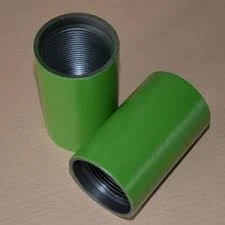- Afrikaans
- Albanian
- Amharic
- Arabic
- Armenian
- Azerbaijani
- Basque
- Belarusian
- Bengali
- Bosnian
- Bulgarian
- Catalan
- Cebuano
- Corsican
- Croatian
- Czech
- Danish
- Dutch
- English
- Esperanto
- Estonian
- Finnish
- French
- Frisian
- Galician
- Georgian
- German
- Greek
- Gujarati
- Haitian Creole
- hausa
- hawaiian
- Hebrew
- Hindi
- Miao
- Hungarian
- Icelandic
- igbo
- Indonesian
- irish
- Italian
- Japanese
- Javanese
- Kannada
- kazakh
- Khmer
- Rwandese
- Korean
- Kurdish
- Kyrgyz
- Lao
- Latin
- Latvian
- Lithuanian
- Luxembourgish
- Macedonian
- Malgashi
- Malay
- Malayalam
- Maltese
- Maori
- Marathi
- Mongolian
- Myanmar
- Nepali
- Norwegian
- Norwegian
- Occitan
- Pashto
- Persian
- Polish
- Portuguese
- Punjabi
- Romanian
- Russian
- Samoan
- Scottish Gaelic
- Serbian
- Sesotho
- Shona
- Sindhi
- Sinhala
- Slovak
- Slovenian
- Somali
- Spanish
- Sundanese
- Swahili
- Swedish
- Tagalog
- Tajik
- Tamil
- Tatar
- Telugu
- Thai
- Turkish
- Turkmen
- Ukrainian
- Urdu
- Uighur
- Uzbek
- Vietnamese
- Welsh
- Bantu
- Yiddish
- Yoruba
- Zulu
Selection and Installation Guidelines for Steel Couplings in Piping Systems and Applications
Steel Couplings for Pipe A Comprehensive Overview
Steel couplings play a crucial role in the piping industry, serving as essential components that connect two sections of pipe together. They are widely used in various applications, including water supply systems, gas distribution, and industrial processes. The functionality, durability, and reliability of steel couplings make them a preferred choice for engineers and contractors alike.
Understanding Steel Couplings
A coupling is a fitting used to connect two pipes, allowing them to convey fluids or gases efficiently. Steel couplings are typically made from high-strength materials, which provide the necessary durability to withstand pressure, temperature fluctuations, and environmental factors. The most common types of steel used in the manufacturing of couplings include carbon steel and stainless steel, each offering unique benefits.
Carbon steel couplings are known for their strength and versatility, making them suitable for a wide range of applications. They are typically less expensive than their stainless steel counterparts, which makes them an attractive option for large projects where cost is a significant factor. Stainless steel couplings, on the other hand, provide excellent resistance to corrosion and are ideal for applications where exposure to harsh chemicals or moisture is a concern.
Types of Steel Couplings
There are several types of steel couplings available, each designed to meet specific needs. The most common types include
1. Threaded Couplings These feature internal threads that securely connect two pipes with external threads. This type of coupling is easy to install and is commonly used in low-pressure applications.
2. Welded Couplings Welded couplings are permanently joined to the pipe through welding. This connection provides a strong bond, suitable for high-pressure applications.
steel couplings for pipe

3. Slip-on Couplings These couplings slide over the end of a pipe and are secured by welding or bolting. They are easy to install and are often used in situations where alignment is crucial.
4. Compression Couplings These are used to connect pipes without the need for welding or threading. They rely on a mechanical grip to hold the pipes in place and are useful in situations where quick assembly is necessary.
5. Expansion Couplings These are designed to absorb thermal expansion and contraction of pipes, preventing damage due to temperature changes. They are particularly important in long piping systems exposed to varying temperatures.
Applications and Advantages
Steel couplings are highly versatile and are used across various industries, including construction, oil and gas, and telecommunications. Their robust nature ensures that they can handle the demands of high-pressure systems, making them an ideal choice for critical applications.
The benefits of using steel couplings include
- Durability Steel couplings are resistant to wear and tear, ensuring a long service life. - Pressure Resistance They can withstand high-pressure environments, making them suitable for demanding applications. - Corrosion Resistance Stainless steel couplings are particularly effective in resisting rust and corrosion, thereby reducing maintenance costs. - Ease of Installation Many types of steel couplings are designed for quick installation, reducing labor costs and project timelines.
Conclusion
In summary, steel couplings are vital components that ensure the integrity and efficiency of piping systems. Their variety of types and robust characteristics make them suitable for a wide range of applications across various industries. As technology advances, the design and manufacturing of steel couplings continue to improve, further enhancing their performance and reliability in modern piping systems. For contractors and engineers, understanding the types and benefits of steel couplings can lead to more efficient project outcomes and a better selection of materials tailored to specific project needs.
-
Tubing Pup Joints: Essential Components for Oil and Gas OperationsNewsJul.10,2025
-
Pup Joints: Essential Components for Reliable Drilling OperationsNewsJul.10,2025
-
Pipe Couplings: Connecting Your World EfficientlyNewsJul.10,2025
-
Mastering Oilfield Operations with Quality Tubing and CasingNewsJul.10,2025
-
High-Quality Casing Couplings for Every NeedNewsJul.10,2025
-
Boost Your Drilling Efficiency with Premium Crossover Tools & Seating NipplesNewsJul.10,2025







